-
History & Society
- Education in Pre-war Hong Kong
- History of Taikoo Sugar Refinery
- Hong Kong Products Exhibition
- Local Festivals Around the Year
- Post-war Industries
- Pre-war Industry
- The Hong Kong Jockey Club Archives
- Tin Hau Festival
- Memories We Share: Hong Kong in the 1960s and 1970s
- History in Miniature: The 150th Anniversary of Stamp Issuance in Hong Kong
- A Partnership with the People: KAAA and Post-war Agricultural Hong Kong
- The Oral Legacies (I) - Intangible Cultural Heritage of Hong Kong
- Hong Kong Currency
- Hong Kong, Benevolent City: Tung Wah and the Growth of Chinese Communities
- The Oral Legacies Series II: the Representative List of the Intangible Cultural Heritage of Hong Kong
- Braving the Storm: Hong Kong under Japanese Occupation
- A Century of Fashion: Hong Kong Cheongsam Story
Geography & EnvironmentArt & Culture- Calendar Posters of Kwan Wai-nung
- Festival of Hong Kong
- Ho Sau: Poetic Photography of Daily Life
- Hong Kong Cemetery
- Sketches by Kong Kai-ming
- The Culture of Bamboo Scaffolding
- The Legend of Silk and Wood: A Hong Kong Qin Story
- Journeys of Leung Ping Kwan
- From Soya Bean Milk To Pu'er Tea
- Applauding Hong Kong Pop Legend: Roman Tam
- 他 FASHION 傳奇 EDDIE LAU 她 IMAGE 百變 劉培基
- A Eulogy of Hong Kong Landscape in Painting: The Art of Huang Bore
- Imprint of the Heart: Artistic Journey of Huang Xinbo
- Porcelain and Painting
- A Voice for the Ages, a Master of his Art – A Tribute to Lam Kar Sing
- Memories of Renowned Lyricist: Richard Lam Chun Keung's Manuscripts
- Seal Carving in Lingnan
- Literary Giant - Jin Yong and Louis Cha
Communication & Media- Hong Kong Historical Postcards
- Shaw Brothers’ Movies
- Transcending Space and Time – Early Cinematic Experience of Hong Kong
- Remembrance of the Avant-Garde: Archival Camera Collection
- Down Memory Lane: Movie Theatres of the Olden Days
- 90 Years of Public Service Broadcasting in Hong Kong
- Multifarious Arrays of Weaponry in Hong Kong Cinema
-
History & SocietyGeography & EnvironmentArt & Culture
-
View Oral History RecordsFeatured StoriesAbout Hong Kong Voices
-
Hong Kong Memory
- Collection
- All Items
- Post-war Industries Topics
Recently VisitedPost-war Industries Topics
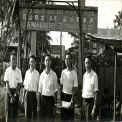
- Hing Wah Battery Factory (Thailand)
Lo Lei Wo, veteran worker of Hing Wah Battery Factory, and his colleagues at the main door of the factory
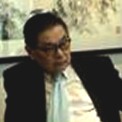
- The founding of The China Paint Manufacturing Company and the background of the founders and seco...
The founder of The China Paint Manufacturing Company, Lam Kwan, native of Taishan, had good academic performance in his early age. He had studied in the United States. While Lam was studying in the U.S., he not only worked in farms picking up fruits but also taught Chinese classes for Chinese-American. He graduated from Brooklyn Institute, New York, while the U.S. was hit by the Great Depression. He recommended himself to a paint manufacturing company and got accepted. Another founder of The China Paint Manufacturing Company, Lam On, the father of Paul Lam and the brother of Lam Kwan, had studied in Guangzhou Lingnan Secondary School and Pui Ching Middle School.
After Lam Kwan returned to Hong Kong from the United States, he founded a small paint factory (The China Paint Manufacturing Company) with his brother, Lam On. Since Lam Kwan had received education on chemical engineering, he brought related skills and knowledge to the factory. At the beginning, the factory produced metal paint and wood paint. The National Lacquer and Paint Products Company were separately founded in the same year (1931).
The China Paint Manufacturing Company had a limited capital to start with; the founders collected the capital from their family while there were only 6 employees. During the Japanese Occupation, the production of The China Manufacturing Company stopped. Lam Kwan turned to produce and sell peanut candy in Liuzhou, Guangxi to sustain his living. In 1946, The China Paint Manufacturing Company was re-registered and the founders raised more fund by selling shares. However, the company scale remained relatively small.
The paint production technology was not advanced in the past. The government did not have strict safety requirements on either paint factories or paint products. The workshop of China Paint had limited facilities, it used cooking pot to boil oil and rarely maintained the machinery. The China Paint Manufacturing Company built a 3 level factory at Arran Street, Mong Kok. The ground level was the production shopfloor, the second level was office and store room for raw materials and solvents, the third floor was the living place for the Lam’s family. Paul Lam had lived in the third floor after Lam Kwan had moved out. Since the paint production process required boiling oil, which is a relatively dangerous procedure, the company rented an open area at Tai Kok Tsui to conduct the process. There were a public playground and a men’s dormitory near the factory at Arran Street. The China Paint Manufacturing Company had established the workshop at Arran Street at the time when Paul Lam was in kindergarten. Male workers were responsible for production processes while female workers were responsible for packaging. Accommodation was provided for male workers only.
Other than Paul Lam, Lam Mo Bill (The son of Lam Kwan), was also the second-generation successor of The China Paint Manufacturing Company. Paul Lam graduated from the University of California, Berlekey with Chemistry major. Lam Mo Bill graduated from Stanford University with Chemistry major too. Since there was no specialized discipline on paint technology in the universities, the only way for people to learn about paint was to study chemistry and to take courses that had contents of paint, such as polymer chemistry. Usually, paint companies would obtain knowledge of paint technology by setting up licensing arrangements with foreign companies. In 1965, The China Paint Manufacturing Company employed the first chemist.
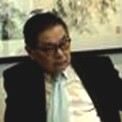
- Paul Lam's academic background, work experience in professional chemistry and his succession of T...
After Paul Lam graduated from university, he had worked oversea for seven years. During that period of time, The China Paint Manufacturing Company had planned to take over a joint venture in Singapore, to improve the unsatisfactory performance of the company. Lam Kwan and Lam On invited Paul Lam to manage the company in Singapore. In arriving at Singapore, he found that the business was not a good investment, he decided to forgo the take-over and returned to Hong Kong. Although paint industry is one kind of chemical industry, Paul Lam considered himself know little about paint. Initially he had no intention to stay and work for the company. Not long afterwards, Lam Kwan died of heart disease. Paul Lam had worked in Hong Kong for less than a year and then returned to his previous employer in the United States. Under the urge of the family, he eventually returned to Hong Kong to help with the family business.
The Lam’s family used to respect the individual interests and initiatives of the younger generation and seldom imposed pressure to the descendants to inherit the family business. For example, all the children of Paul Lam did not major in science specialties and he didn’t plan to arrange his children to be successors.
Paul Lam had studied in La Salle College and then changed to Diocesan Boys' School at Form 2, where he studied until graduation. Since his parents had little knowledge about studying abroad, Paul Lam himself gathered information from his teacher and sent out an application to The University of California, Berkeley. He was admitted and left for Berkeley in early 1962. There were a good number of graduates from Diocesan Boys’ School to study abroad.
Paul Lam did not have particular expectation about his future after graduation. He had a lot of interests and activities and work was only one of his concerns. At that time it was not difficult for one to find a living in the United States. Therefore, Paul Lam did not worry about his career future. Upon graduation, he joined the Specialty Gas industry, which was a challenging industry that provided him with great satisfaction. He witnessed the rapid growth of the electronics industry in the 1970s. At that time, electronic companies like Pioneer and Dupin applied a special poisonous gas rather than atomic particles to produce chips for the brands’ circuit boards.
The company he worked for was a material supplier for electronic companies. In 1969, his company supplied the disinfection gas to the American astronaut Armstrong when he returned to the Earth after landing on the Moon. It was common for the American hospitals to use the same disinfection gas. In 1970s, he was relocated to Los Angeles, a city which was faced with serious air pollution. His company provided gas for General Motor to detect the gas exhaustion level. His company also produced heavy water, a material for producing atomic bomb. The production of atomic bomb was a dangerous industry as carbon monoxide was emitted as a by-product. When he was the Chemist of the company, Paul Lam had witnessed explosion in the company. Therefore Paul Lam was experienced in managing accidents and hazards in the paint industry. Back in the U.S., Pau Lam was promoted to branch manager since he showed good performance in handling an accident caused by hydrogen chloride in the Intel Corporation. He was then the youngest and the only expatriate branch manager of the company.
The Lam’s family had urged Paul Lam to return to Hong Kong several times. He made such move after he had obtained the resident identity (literally called Green Card) after marriage. To maintain his resident status in the U.S., he returned to the U.S. after he had worked in Hong Kong for around one year. To make good use of his mobility, the Lam’s family arranged Paul Lam to for Sherwin Williams, which engaged in a partnership of technology transfer with China Paint. Sherwin Williams was the largest paint company in the United States. Paul Lam was employed as a salaried technician for 9 months. He was there to learn the skills necessary for producing the brand name products under China Paint. The two companies signed a 10-year partnership agreement for technology transfer. China Paint was allowed to use the technology and the brand name of Sherwin Williams to produce paints in Hong Kong. Because of this partnership, the production technology of China Paint was improved. Paint companies needed chemists to produce paint and made adjustment according to client’s request. However, Paul Lam believed the company could not rely on the paint manufacturing formula only. Fulfilling the need of customers and providing quality customer service would also be important. The marketability of paint products relied on proper chemical formula, sale network, adequate combination of materials and the skill knowledge of technicians. Therefore, instead of focusing on chemical formulas, China Paint employed consultants to teach its staff with the chemical knowledge and properties of paint materials.
After Paul Lam left Sherwin William, he returned to China Paint and worked at the Kwun Tong factory. At first, he engaged in the administrative section to improve the company’s work environment, efficiency, labour structure and promotion system. Then, he worked on market research, doing analysis on the market shares and profit margin of the company and its competitors.
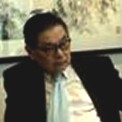
- The development of The China Paint Manufacturing Company (Part I): Plant, products variety and in...
In the 1970s, there were six major paint factories, Kin Kwok Lacquer Manufacturing Company and several small factories in Hong Kong. The market competition was intense. China Paint had two plants in Kwun Tong, one of which was built by the company. It was a 6-level building of 40,000 square ft. The factory moved to Sai Kung later, which had a total area of 160,000 square ft. Nowadays the company had a factory in Shenzhen with a total area of 58,000 square meters, which was still not sufficient for operation. At the time when Paul Lam started to work for the company, the sales figures were only of 8 digits. In terms of market share, the company was the smallest among the major paint factories, with National Lacquer and Paint Products Company being the largest among all. Nowadays the China market contributed 90% of the company’s sales.
The company’s products used to be exported to overseas markets. In the 1970s, as many of these import countries imposed various kinds of import restriction, China Paint began to develop local market. At that time, Hong Kong’s industries was growing rapidly. With the help of foreign companies, Paul Lam and his cousins switched to produce industrial paints. In the early stage of China’s economic reform, the company started to relocate its production to China, which led to an increase of orders from the industrial sector. The company’s industrial paint could be used for producing rattan, electronic fans and toys. Types of toy included metal toy cars, both soft and hard plastic toys and PVC dolls. Different types of toy required different kinds of paint. The paints for toy were mostly classified into the followings: paint for metal, paint for hard plastic such as Acrylonitrile Butadiene Styrene (ABS) paint, paint for soft plastic such as Polypropylene (PP) paint, Polyethylene (PE) paint and Polyvinyl Chloride (PVC) paint.
During the production of the company’s industrial paint, the chemists had to try different combinations of chemical materials in order to fit with the receptivity of different material surface. Once the chemists successfully fit a type of paint with the kind of material, they would focus on cost reduction. 30% to 40% of the company’s revenue came from toy paint, which representing 70% of the Hong Kong market demand. Paint for architectural construction composed the major part of the company’s revenue. Brand name “Flower” was specialized for architectural construction while “GIRAFFE” was specialized for paint for wood.
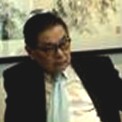
- The development of The China Paint Manufacturing Company. Part II: Set up factory in China, Dismi...
In 1981, The China Paint Manufacturing Company established a processing factory in China. In 1993, the production line began to be relocated to China stage by stage. In the 1980s, during every Chinese New Year most of the buildings in Hong Kong would be renovated, resulting that the demand for small cans of paint increased. Therefore the company produced and kept a large storage of paint in the factory. The factory could not keep a big storage due to the lack of space as well as the increasingly stringent legal restriction against storage of dangerous chemicals. As a result, the company set up a processing factory in Nantou as a storehouse of the dangerous chemicals. In 1986, the company established a joint venture between the state and the company at Xixiang to produce wood nitrocellulose paint. Compared to other types of paint, nitrocellulose paint was more dangerous as it easily caught fire. The company closed the Xixiang factory in 1996.
When the company’s customers relocated their factories to China, the company made the same move. Initially Paul Lam did not want to run production operation in China, as there were not enough qualified and capable technical personnel there. Finally the company made the move to China because it wanted to provide more efficient and customized service to its customers in China, to shorten the delivery time and to skip the tax of importing materials.
Some of China Paint’s former employees formed their own companies in China. Some of these companies undertook the same kind of business as China Paint and served the same group of China Paint’s customers. Paul Lam cited one example that a former employee who came from Guangdong Province and managed the marble section of China Paint, later set up a new company doing the same type of work as what he did in China Paint.
In July 1st, 1993, China Paint officially stopped the production operation in Hong Kong. In so doing, several months before the stoppage, China Paint recruited and trained workers in the two processing factories in China.
At the peak period, there were over a hundred workers at the Sai Kung factory, and around a hundred workers at the Kwun Tong factory. There were about 300 workers in the China’s plant at the beginning. Now, together with the sales people, there were a total of 500 workers. More workers were required for producing paint for toys. If China Paint gave up production of paint for toys, it could reduce the labour force. To set up production facilities in China, the company relocated the machineries that were still working properly from the Hong Kong’s factory. In addition, the company also installed new equipment in the new factory premise in Shajing, Shenzheng, which was the current factory premise of China Paint.
At the beginning when China Paint started up production in China, it arranged some 20 people from Hong Kong to stay and work there. They were supervisors and engineers. Now the Hong Kong group was reduced to less than 10 people. As most chemists refused to work in China, now only a few chemists remained. Throughout the relocation process, around one hundred workers in the Hong Kong factory were laid off. The company provided compensation for all dismissed workers. China Paint used to provide pension to its workers. The relationship between the company and the workers was good and the workers would organize activities after work.
China Paint had to recruit new workers for the factory in China. Some workers were transferred from a joint venture between China Paint and a state-owned chemical company in Xian. Every two years, this company would transfer its experienced and skilled workers to the factory of China Paint in China. Under economic reform, some of the workers from the joint venture remained with the company.
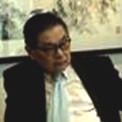
- The operation direction of The China Paint Manufacturing Company after the local paint industry m...
After The China Paint Manufacturing Company moved its production to China, the sales had rocketed 10 times. In the past, the sales to Hong Kong users represented 99% of the company total sales. But now, it constituted only 10%. In the past, China Paint undertook the painting process in Hong Kong for its customers of Architectural paint. Nowadays, the customers placed order in China and thus the painting process was finished there and the final products would be shipped to Hong Kong afterwards.
Paul Lam described that previously the company was like a boutique store, which had limited and tailor made products, resulting in a high profit margin. In order to satisfy the current market demand in China, the company changed to mass production so that it could reduce cost of production and improve competitiveness. Mass production could also allow the company to ask for discount from raw material suppliers. When the production was undertaken in Hong Kong, transportation cost was low because the distance of product delivery was short. After the factory was set up in China, the distance of delivery increased as well as the transportation cost. Moreover, as the climate varied greatly from the south to the north in China, the company had to adjust the product properties to suit the local climate. For example, in the northern part of China the climate was dry in the winter while in the southern region it was more humid.
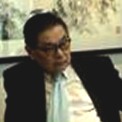
- Family corporate culture and the participation of family members
Lam Kwan and Lam On founded The China Paint Manufacturing Company. Lam Kwan was responsible for technology and material purchase. Lam On was responsible for administration and production. When Paul Lam joined the company, he had worked on administration, planning and marketing. Later he switched to research and product development for environmental friendly paint because he had this kind of knowledge and experience. Now, Paul Lam was more interested in developing new products. For example, inspired by the Housing Authority, he was committed to developing paint with the functions of thermal insulation and protection.
Although he was interested in developing new products, he seldom worked in the laboratory. Instead he would discuss and work with the chemists. Once a product was successfully developed, he would devise marketing strategy with the sales personnel.
Paul Lam said that job rotations were arranged to fit with the development of the company. He himself had worked at several positions within the company. When he entered the company, he spent most of the time on production and administration. In 1982, due to the significant drop of sales, he switched to manage the sales and marketing department. Now, he focused on developing new products. With the request of the clients, the company relocated its production to China. The company had considered setting up the factories in the Philippines, Taiwan and Thailand. Its original plan was to undertake processing and then transported the products for sale in Hong Kong. However, this arrangement required a significant investment in transportation. Meanwhile, China had opened up its market for foreign investment in the industry. Finally the company selected China.
Paul Lam described the China Paint Manufacturing Company as a small family enterprise. When he returned to Hong Kong, the company had only 4 family members working there, the two founders Lam Kwan and Lam On, plus Paul Lam and his cousin. Although some of the shareholders were also Taishan kinsmen, they mostly stayed abroad. At the beginning, Lam Kwan and Lam On relied on their relatives in Taishan to run the company. Paul Lam believed that relatives were more trustworthy, easy to communicate, more responsible and able to work effectively. However, when the company became more developed, it was essential to define clearly authority and responsibility of each position. In the 1970s, the number of Taishan workers decreased in the company. Paul Lam introduced a salary and administrative system into the company in order to define clearly the functions of its employees. On the other hand, there was no precise formula for the production of each paint; production quality relied on the individual expertise of the technicians. Under the management of Paul Lam, production had to follow specific procedures and formulae, so that the company could control production cost and product quality.
In 1932 when the China Paint Manufacturing Company established, it was operated as a family enterprise. In the 1960s, after the company moved its factory from Mongkok to Kwun Tong, the management of the business became more institutionalized. Paul Lam believed the company did not have to be taken over by people with chemistry training. He thought that people with economics training should be more suitable. At the beginning, both Paul Lam and his cousin were not willing to join the family business. His cousin worked in the company until 1986. One of the founders Lam On retired in the 1980s, with an age of over 80. In the 1960s, the company had already employed sales managers and chemists to manage the company. However, their performance was far from satisfactory. Therefore, Paul Lam was asked to come back and take over the business. Before working in Hong Kong, Paul Lam had earned some working experience already. His family wanted him to be the General Manager in Singapore first. When he joined The China Paint Manufacturing Company, he worked as the manager of production department, carrying the title of “Director”. All family members carried the title “Director” of the company.
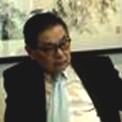
- The different brands’ characteristics of The China Paint Manufacturing Company and the founding ...
The China Paint Manufacturing Company tailored different product types to fit with the needs of different types of users. The “Flower” brand is designed for do-it-itself users while the “Giraffe” brand is designed for professional users. The company also used Giraffe brand for toy paint at the beginning, which later changed to a new brand, the Toy brand. Toy brand was promoted as a safe and non-toxic product line. Nowadays, the company still marketed the three brands in Hong Kong, but in China it promoted a range of product brands at different regions.
Since 1932, the company had been using “Flower” as the company’s brandname, which was called “Chrysanthemum”. The brand logo was previously a portrait of chrysanthemum flower. Since Paul Lam joined the company, the logo was changed to the current mode of a pictorial flower to make it look trendy. Now, the brandname was called “Flower” and the product quality had been improved.
Initially the quality of the emulsion paint was not satisfactory because the technology applied was too low. Since it committed to a collaborative agreement with Sherwin William Company, China Paint knew how to apply additives properly in the mixing stage to improve product quality.
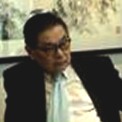
- The sales distribution of The China Paint Manufacturing Company in Hong Kong
The products of China Paint Manufacturing Company were promoted and sold through hardware stores and distributors. The hardware stores in the public estates were small, with limited space. In order to increase the motivation of the stores to showcase China Paint’s products, the company had to advertise its products through mass media such as television commercials, to attract the attention of the general public.
Paul Lam explained that the users could be classified as do-it-yourself users, construction contractors and professional masters. The company increased its competitiveness by tailoring different brands to the needs of users. “Flower” targeted at do-it-yourself users. The most popular products were silver paint and small cans of paint. “Giraffe” targeted at contractors and professional users, with the most popular products being the lacquer.
Since sales agents sourced products from distributors, China Paint had to invest in commercial advertising to increase its popularity, so that the distributors became more motivated to place larger orders to the company. As China Paint was willing to design tailor-made products to meet the needs of its customers, these customers placed orders directly to the company. Usually the volume of these orders was sizeable, hence the company would send technicians to stay at the customer’s factory to provide after-sale service.
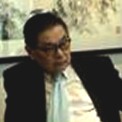
- The China Paint Manufacturing Company factory establishment, research and development and sales m...
The company had production facilities in Xinjiang and Tibet. The local sale was good. However, in the northeast and certain parts of northwest China, the sales situation was relatively poor. The company needed to send sales persons to different regions to develop new markets. In China, the company mostly sold architectural paint to contractors, factories and office users. Meanwhile, in Guangdong province, the more popular products were industrial paints. Customers included factories that produced oil rig and motor vehicles.
The company had a laboratory for product development. Most of the chemists were mainland graduates, some of whom had worked for more than 10 years; whereas the Chief Chemist was from Hong Kong. All the chemists were required to have a degree on chemistry. The company would hire graduates from China’s universities and offer them training.
As the paint market in China was huge, China Paint had only a market share of 1%. At the time when production remained in Hong Kong, the company managed to capture 20% of Hong Kong market. Similar to the food industry, nowadays the traditional industries like paint had set up production facilities in China to do mass production, which supplied both the Hong Kong and China markets.
Copyright © 2012 Hong Kong Memory. All rights reserved.
| Set Name |





